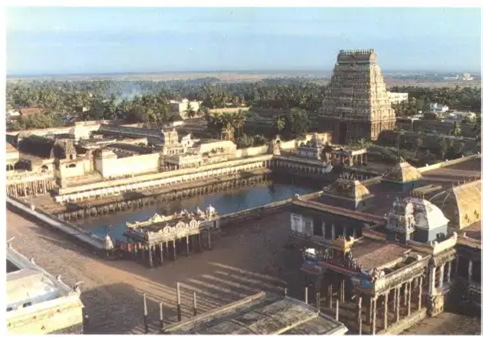Significance of Chidambaram

Chidambaram, home to the Thillai Nataraja Kovil, is a town in the Cuddalore district of Tamil Nadu, India. The significance of Chidambaram and its temple, Thillai Nataraja Kovil, is deeply rooted in philosophy, spirituality, and mysticism:
Etymology and Symbolism:
The name “Chidambaram” combines two aspects of the temple’s philosophy. “Cit” refers to consciousness or wisdom, and “Ambaram” signifies ether or hall.
Therefore, Chidambaram represents both the “Hall of Wisdom” and the “Place of the Ether of Consciousness.”
The temple is dedicated to Lord Nataraja, who is worshipped in the form of the Cosmic Dancer and as a crystal Linga, representing form and formlessness, and as Akasha or Space-linga, representing the invisible.
Pancha Mahabhuta Kshetra:
Chidambaram is one of the Pancha Mahabhuta Kshetras, representing the five elements of nature.
It signifies the element of ether (Akasha), which is associated with consciousness.
Unique Temple Structure:
The Chidambaram temple was designed and consecrated by Sage Patanjali, the author of the “Yoga Sutras.”
The temple’s structure is unique and symbolizes the entire structure of a human being.
It is located at the center point of the world’s magnetic equator.
Concentric Prakaras and Human Body:
The temple is designed with five concentric Prakaras, or circumambulatory temple courtyards, which are associated with the Five Layers (Pancha Kosha) of the human body.
Cosmic Dance of Nataraja:
The sanctum sanctorum, called Cit Sabha or Cit Ambalam, is the central shrine where Lord Shiva Nataraja performs His Cosmic Dance, the Ananda Tandava or Dance of Bliss.
This dance represents the rhythm of creation and destruction, a concept mirrored in modern physics.
CERN’s Acknowledgment:
In 2004, CERN (European Center for Research in Particle Physics) unveiled a 2m tall statue of Lord Shiva in Nataraja form, acknowledging the significance of Shiva’s dance in understanding the behavior of subatomic particles.
Integration of Science and Spirituality:
The Chidambaram temple’s structure aligns with the human body’s nine entrances, symbolizing the openings of the body.
The temple’s roof is made of 21,600 gold sheets, representing the 21,600 breaths a human takes daily.
The 72,000 gold nails used to fix the sheets represent the body’s Nadis (nerves) that transfer energy to certain invisible body parts.
The tilted placement of the Ponnambalam represents the heart, and to reach it, one must climb five steps called “Panchatshara padi.”
Inner Transformation:
Chidambaram is not merely an external place but is believed to exist within the highest chakras of a person.
It is considered a place of inner transformation, awakening, and God realization.
